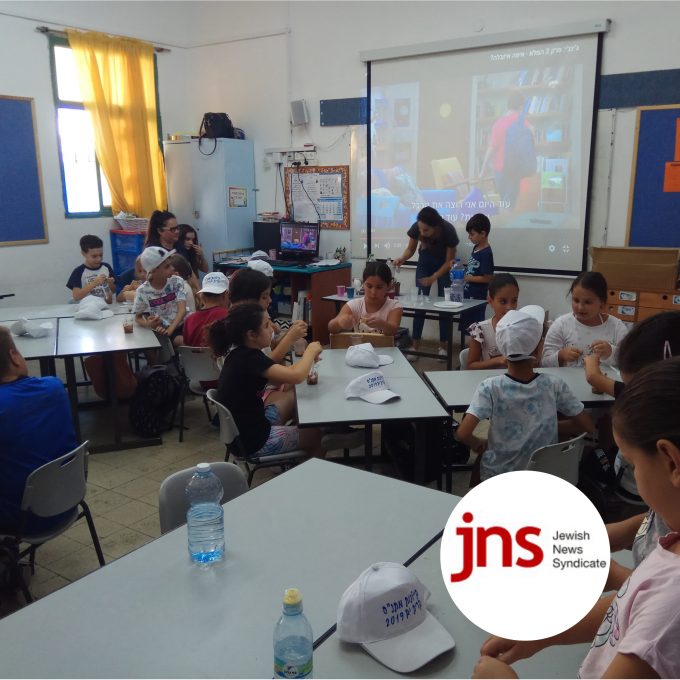ORT Argentina’s expertise in harnessing new technology to raise educational standards is spearheading a fundamental change in the culture of the country’s wider education system.
A pilot project in which teachers trained by ORT Argentina in the use of educational technology have gone on to train staff at seven secondary schools in Rosario, the largest city in Santa Fe province, has been so successful that the scheme is expected to reach out to a further 200 schools this year. The teachers learn to use software tools which foster interaction and collaboration between them and their students and to extend the boundaries of the classroom through use of the Internet. They become major players in the process of selecting content and designing teaching strategies, exploring and developing virtual resources (including the internationally acclaimed ORT Virtual Campus pioneered by ORT Argentina), testing them in the classroom and making adjustments based on the results.
ORT Argentina is working on developing similar projects for the provinces of San Juan, Entre Rios, Corrientes and Tucuman following expressions of interest from their education authorities.
“I hope to receive confirmation of Santa Fe’s interest to expand the process by the end of [April],”? said Alejandro Ferrari, Studies Director at the ORT Technical School, Belgrano campus. “What we are doing is 99 per cent about inculcating a new educational culture and only one per cent developing technological skills. It’s very exciting.”?
Mr Ferrari is one of the creators of the Teaching and Learning Resource Centre (CREA), which has been operating at ORT Argentina since 2003.
When ORT Argentina started teaching technology it had to fill the vacuum in teaching materials created by the subject not being part of the national curriculum. CREA was set up so that what was learned could be shared with teachers of other subjects, from English and Jewish Studies to maths and sciences.
“CREA is a place where teachers can design and develop teaching materials and discuss methodology and content in light of the changes necessitated by incorporating web-based and other technological tools in classroom learning,”? said Mr Ferrari..
“At school, students not only learn the content of what they are taught, they learn the way their teachers approach the knowledge. So if you only use a book you are giving them just one way to approach knowledge. Using new technology allows great flexibility in the way children are taught because there is now a greater capacity for children to explore how to learn. Not only that, in previous generations data was not so accessible so the transference of this data took a higher priority. Now, it only takes seconds for a child to find something out on Google so schools have to incorporate strategies on how data should be used.”?
The principle is at the centre of ORT Argentina’s role in “training the trainers”? for Santa Fe.
“Santa Fe’s Education Minister, Elida Rasino, visited ORT Argentina and recognised the opportunity we offered to transform the system. She sent a team of experts to assess what we were doing which resulted in our starting work about 10 months ago,”? Mr Ferrari said.
The Rosario schools each chose one or two teachers to learn the process at ORT Argentina and they then passed on the knowledge to their peers “モ a role not unlike that of the Innovation Leader at each of the more than 30 campuses collaborating with Kadima Mada, World ORT’s programmatic arm in Israel.
“The content is not the main thing because the people who know what they are teaching are the teachers themselves,”? Mr Ferrari said. “You need people who understand the concept and can lead the teachers and give them ideas on how to incorporate the new technology.”?
He and his colleagues provide on-going support for the trainers, making periodic visits so that they could understand the local context in which the teachers operate and the resources available to them.
Ms Rasino visited three of the schools recently; at one she observed students working on colour theory in projects developed with graphics software and Computer Aided Design and at another she watched language students use blogs, wikis and on-line videos to develop skills in the formulating argument.
She told reporters: “What we are working on shows that education has different dimensions and we have made advances in many of them throughout the year.”?
This new approach to education puts the teacher back in a central and leading role in the learning process and, in so doing, helps to reverse the decline in respect that members of the profession have experienced over recent decades.
“A big problem is that students know more than their teachers about using new technology. But when they see their teachers are adept at using technology then they develop a new respect for them. We find that the relationship between teachers and students improves daily,”? said Mr Ferrari, who manages the project with ORT Belgrano Campus Principal Viviana Jasid and ORT Argentina National Director Adrian Moscovich. “The feedback we have received from schools has been very positive: they have told us that it has strengthened relations between teachers, who have likened the new culture to a breath of fresh air in their working lives.”?





